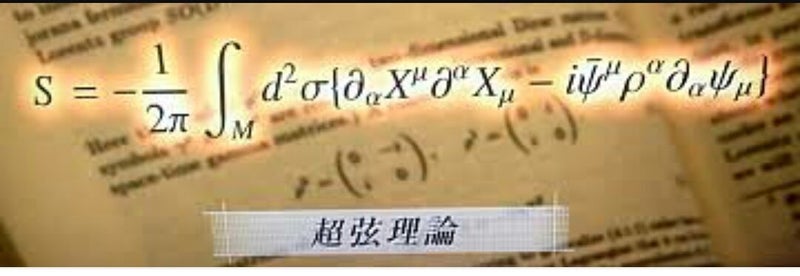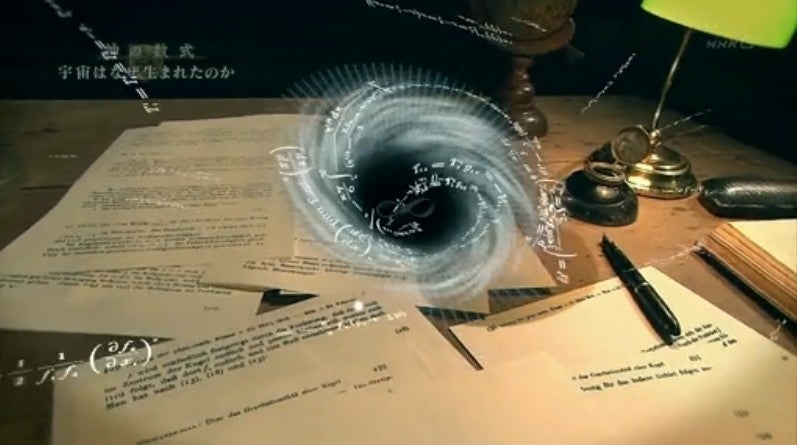Sir Isaac Newton kimdir? Sir Isaac Newton neyi bulmuştur?
Sir Isaac Newton kimdir? Sir Isaac Newton tarafından keşfedilen şeyler nelerdir? İşte Sir Isaac Newton hakkında bilmeniz gereken her şey...

Sir Isaac Newton İngiliz matematikçi, gök bilimci, ilahiyatçı ve fizikçidir. 25 Aralık 1642 ve 20 Mart 1726 ya da 1927 yılları arası yaşadığı kabul edilir. Tüm zamanların en etkili bilim insanlarından birisi olarak kabul edilen Sir Isaac Newton bilimsel devrimin anahtar isimlerinden birisidir. Philosophiæ Naturalis Principia Mathematica ( Doğa Felsefesinin Matematiksel İlkeleri) kitabını 1687 yılında yayınlamıştır. Kitapta klasik matematik esasını konu alır. Sir Isaac Newton ayrıca optik bilimine çığır açan katkılar sağlamış ve matematiksel analizin giriş kısmı olan sonsuz küçükler hesabını geliştirmiştir.
Sir Isaac Newton neleri keşfetmiştir?
Principia adlı kitabında Sir Isaac Newton evrensel kütle çekim yasasını ve hareket yasalarını formülleştirmiştir. Bu formüller 3 yüzyıl boyunca bilim insanlarının fiziksel evreni anlayış biçimi olmuştur. Kütle çekimin matematiksel tanımından hareketle Kepler'in gezegensel hareket yasalarından hareketle kütle çekimin matematiksel tanımından yola çıkarak kuyruklu yıldızların yörüngeleri, gelgit, yörüngesel salınım ve benzer fenomenleri aynı prensipleri kullanarak açıklamıştır. Sir Isaac newton ayrıca Güneş'in Güneş Sistemi'nin merkezinde bulunduğunu açıklayan günmerkezlilik modelininin geçerliliği hakkındaki şüpheleri ortadan kaldırmıştır. Sir Isaac Newton, Dünya'nın küre benzeri bir şekle sahip olduğunu öne sürmüş ve bu teori daha sonra Pierre Louis Maupertuis ve Charles Marie de La Condamine gibi isimlerce doğrulanmıştır. Bu sebeple Kıta Avrupası'ndaki bilim insanlarının birçoğu Newton Mekaniği'ni René Descartes'ın eski sistemine üstün olarak kabul etmiştir.

Sir Isaac Newton ayrıca ilk yansıtmalı teleskobu icat etmiştir ve prizmanın beyaz rengi görünür ışığa çevirerek renkleri oluşturduğunu öne sürdüğü Renk Teorisi'ni ortaya atmıştır. Sir Isaac Newton'un ışık hakkındaki çalışmaları 1704 yılında yayınladığı Opticks adlı kitabında yer almıştır. Newton ayrıca Soğuma Kanını formülü geliştirmiş ve ışığın hızı ile ilgili ilk teorik hesaplamayı yapmıştır ve Newton tipi akışkanları tanıtmıştır. Kalkülüs üzerindeki araştırmalarının yanı sıra Newton, binom açılımını yaygınlaştırmış, matematikte kök işlemini geliştirmiş ve kübik splineyi sınıflandırmıştır.
Sir Isaac Newton fizik ve matematik dışında ne gibi çalışmalar yaptı?
Sir Isaac Newton Cambridge Üniversitesi Trinity Koleji'nde akademi üyesiydi ve ikinci Lucasian Matematik Profesörü'ydü. Dindar biriydi fakat bilinen Hristiyanlık öğretilerinin dışında bir inancı vardı ve bu sebeple gizliden gizliye Trinity Koleji'nin din doktrinlerini reddediyordu. Matematiğe yaptığı katkıların yanı sıra Newton zamanının büyük bir kısmını ayrıca simya ve İncil'in kronolojisi üzerinde çalışmalar yapmaya adadı. Bu alanlarla yaptığı çalışmalar ölümünün ardından çok sonra yayınlandı.
とても興味深く読みました:
\documentclass[12pt]{article}
\usepackage{latexsym,amsmath,amssymb,amsfonts,amstext,amsthm}
\numberwithin{equation}{section}
\begin{document}
\title{\bf Announcement 388: Information and ideas on zero and division by zero\\
(a project)\\
(2017.10.29)}
\author{{\it Institute of Reproducing Kernels}\\
Kawauchi-cho, 5-1648-16,\\
Kiryu 376-0041, Japan\\
}
\date{\today}
\maketitle
The Institute of Reproducing Kernels is dealing with the theory of division by zero calculus and declares that the division by zero was discovered as $0/0=1/0=z/0=0$ in a natural sense on 2014.2.2. The result shows a new basic idea on the universe and space since Aristotelēs (BC384 - BC322) and Euclid (BC 3 Century - ), and the division by zero is since Brahmagupta (598 - 668 ?).
In particular, Brahmagupta defined as $0/0=0$ in Brāhmasphuṭasiddhānta (628), however, our world history stated that his definition $0/0=0$ is wrong over 1300 years, but, we showed that his definition is suitable.
For the details, see the references and the site: http://okmr.yamatoblog.net/
We would like to write some story on zero and division by zero. For this purpose, we would like to gather some wide ideas and feelings on the zero and division by zero. For some precise facts and some wide viewpoints on these topics, please kindly send your ideas and feelings. For some valuable ones, we would like to immediately distribute them as in examples on the division by zero (now over 670 items).
For your kind comments, several lines will be well-comed
and or in A4 one page in word.
Please kindly send your ideas to the e-mail address:
\medskip
kbdmm360@yahoo.co.jp
\medskip
We would like to hear your valuable and interesting ideas on these topics.
\bibliographystyle{plain}
\begin{thebibliography}{10}
\bibitem{cs}
L. P. Castro and S. Saitoh, Fractional functions and their representations, Complex Anal. Oper. Theory {\bf7} (2013), no. 4, 1049-1063.
\bibitem{kmsy}
M. Kuroda, H. Michiwaki, S. Saitoh, and M. Yamane,
New meanings of the division by zero and interpretations on $100/0=0$ and on $0/0=0$,
Int. J. Appl. Math. {\bf 27} (2014), no 2, pp. 191-198, DOI: 10.12732/ijam.v27i2.9.
\bibitem{ms16}
T. Matsuura and S. Saitoh,
Matrices and division by zero z/0=0,
Advances in Linear Algebra \& Matrix Theory, 2016, 6, 51-58
Published Online June 2016 in SciRes. http://www.scirp.org/journal/alamt
\\ http://dx.doi.org/10.4236/alamt.2016.62007.
\bibitem{ms18}
T. Matsuura and S. Saitoh,
Division by zero calculus and singular integrals. (Submitted for publication)
\bibitem{mms18}
T. Matsuura, H. Michiwaki and S. Saitoh,
$\log 0= \log \infty =0$ and applications. Differential and Difference Equations with Applications. Springer Proceedings in Mathematics \& Statistics.
\bibitem{msy15}
H. Michiwaki, S. Saitoh and M.Yamada,
Reality of the division by zero $z/0=0$. IJAPM International J. of Applied Physics and Math. 6(2015), 1--8. http://www.ijapm.org/show-63-504-1.html
\bibitem{mos17}
H. Michiwaki, H. Okumura and S. Saitoh,
Division by Zero $z/0 = 0$ in Euclidean Spaces,
International Journal of Mathematics and Computation, 28(2017); Issue 1, 2017), 1-16.
\bibitem{osm17}
H. Okumura, S. Saitoh and T. Matsuura, Relations of $0$ and $\infty$,
Journal of Technology and Social Science (JTSS), 1(2017), 70-77.
\bibitem{ps18}
S. Pinelas and S. Saitoh,
Division by zero calculus and differential equations. Differential and Difference Equations with Applications. Springer Proceedings in Mathematics \& Statistics.
\bibitem{s14}
S. Saitoh, Generalized inversions of Hadamard and tensor products for matrices, Advances in Linear Algebra \& Matrix Theory. {\bf 4} (2014), no. 2, 87--95. http://www.scirp.org/journal/ALAMT/
\bibitem{s16}
S. Saitoh, A reproducing kernel theory with some general applications,
Qian,T./Rodino,L.(eds.): Mathematical Analysis, Probability and Applications - Plenary Lectures: Isaac 2015, Macau, China, Springer Proceedings in Mathematics and Statistics, {\bf 177}(2016), 151-182. (Springer) .
\bibitem{ttk}
S.-E. Takahasi, M. Tsukada and Y. Kobayashi, Classification of continuous fractional binary operations on the real and complex fields, Tokyo Journal of Mathematics, {\bf 38}(2015), no. 2, 369-380.
\bibitem{ann179}
Announcement 179 (2014.8.30): Division by zero is clear as z/0=0 and it is fundamental in mathematics.
\bibitem{ann185}
Announcement 185 (2014.10.22): The importance of the division by zero $z/0=0$.
\bibitem{ann237}
Announcement 237 (2015.6.18): A reality of the division by zero $z/0=0$ by geometrical optics.
\bibitem{ann246}
Announcement 246 (2015.9.17): An interpretation of the division by zero $1/0=0$ by the gradients of lines.
\bibitem{ann247}
Announcement 247 (2015.9.22): The gradient of y-axis is zero and $\tan (\pi/2) =0$ by the division by zero $1/0=0$.
\bibitem{ann250}
Announcement 250 (2015.10.20): What are numbers? - the Yamada field containing the division by zero $z/0=0$.
\bibitem{ann252}
Announcement 252 (2015.11.1): Circles and
curvature - an interpretation by Mr.
Hiroshi Michiwaki of the division by
zero $r/0 = 0$.
\bibitem{ann281}
Announcement 281 (2016.2.1): The importance of the division by zero $z/0=0$.
\bibitem{ann282}
Announcement 282 (2016.2.2): The Division by Zero $z/0=0$ on the Second Birthday.
\bibitem{ann293}
Announcement 293 (2016.3.27): Parallel lines on the Euclidean plane from the viewpoint of division by zero 1/0=0.
\bibitem{ann300}
Announcement 300 (2016.05.22): New challenges on the division by zero z/0=0.
\bibitem{ann326}
Announcement 326 (2016.10.17): The division by zero z/0=0 - its impact to human beings through education and research.
\bibitem{ann352}
Announcement 352(2017.2.2): On the third birthday of the division by zero z/0=0.
\bibitem{ann354}
Announcement 354(2017.2.8): What are $n = 2,1,0$ regular polygons inscribed in a disc? -- relations of $0$ and infinity.
\bibitem{362}
Announcement 362(2017.5.5): Discovery of the division by zero as $0/0=1/0=z/0=0$
\bibitem{380}
Announcement 380 (2017.8.21): What is the zero?
\end{thebibliography}
\end{document}



































0 件のコメント:
コメントを投稿